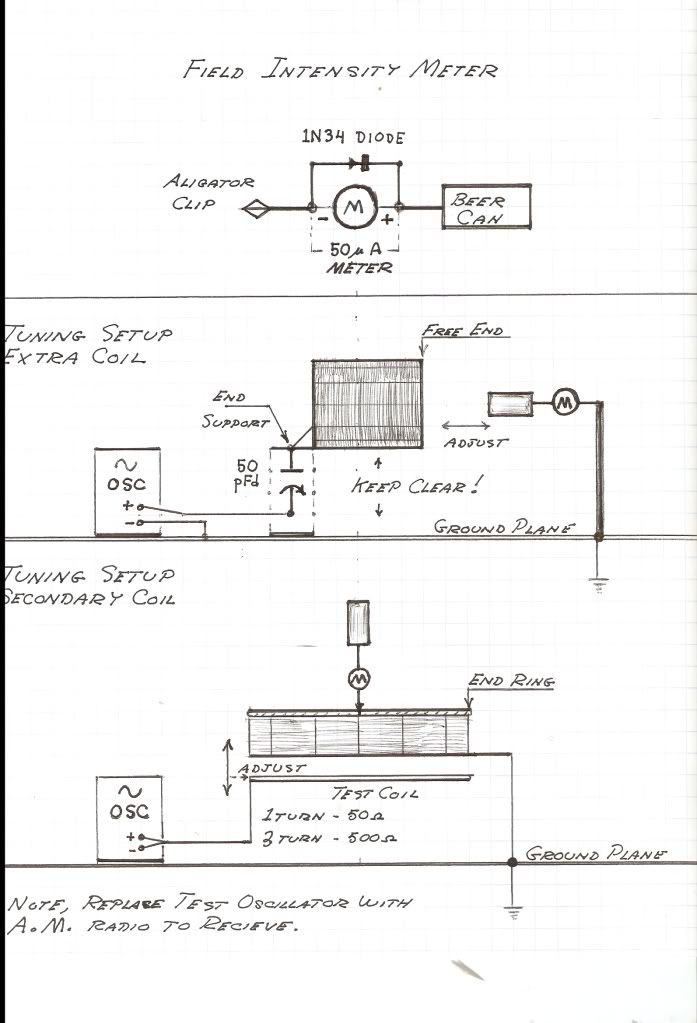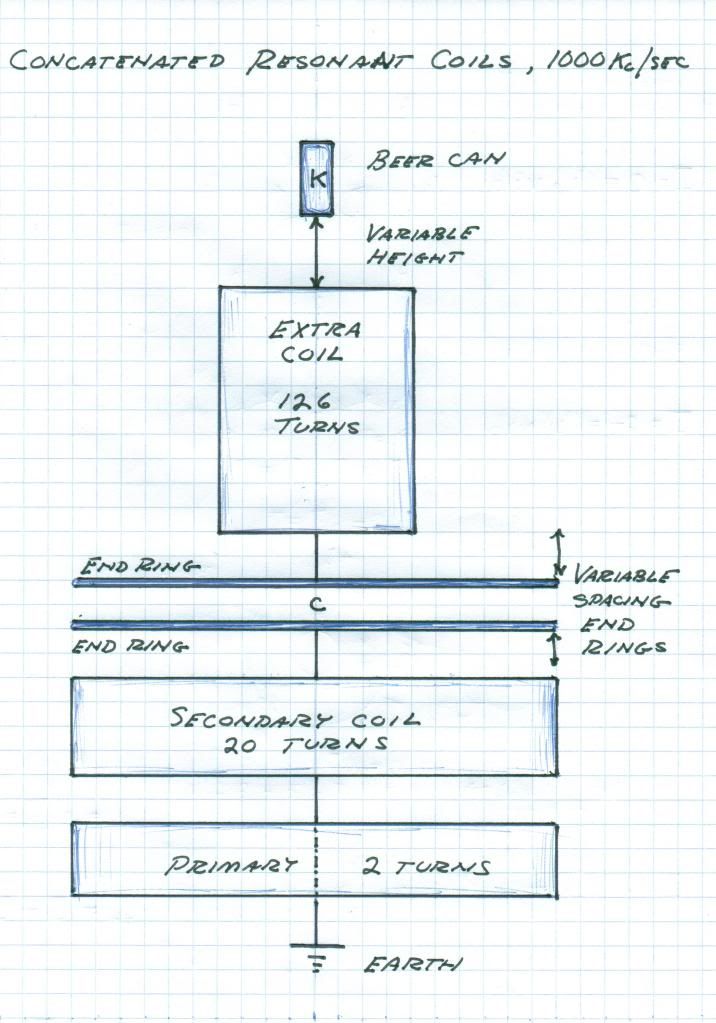Im Back!
So before I was freaked out earlier. I was tring to figure out the standing issue I have.
@ mad, I like it when you lazy.
So what I really wanted to ask was why is there only a partial wave along the coil at resonance? With a 1 turn primary I get 1/4 of a wave along the entire coil. Meaning the the can has highest "potential and the potential along the coductor goes down to nothing as you approach ground.
However a few days ago I had 1/2 wave at resonance when I was using my primary instead of a 1 turn copper strip. Meaning highest potential on terminal, the 5 turns on in the middle of the coil had nothing and voltage went back up(actually -) as you approached the ground.
I had just got my primary back on when. I pooped my pants.. Spent the rest of the day at FCC.. and wiki.
What did I learn there: 2mHz-3.5mHz is wierd and is allocated to maritime, ship to shore, and other , but the coast guard uses it as well and I can't forget 2.1735MHz mobile distress and calling frequency.. I was all over that one today. With the right termination/salad bowl. I learned I can keep it under 2MHz and still play as long as I keep it turned down all the way..
I used a FWBR made from SF35s and SF37s diodes. Across the DC of the FWBR I used a 100pF cap. Powering the function generator at 1.8MHz the max I could get was 90mA straight across a DMM out from the rectifier. How do I go from that to "milliwatts of DC input power to the final RF stage"?
time to do the pots.
So before I was freaked out earlier. I was tring to figure out the standing issue I have.
@ mad, I like it when you lazy.
So what I really wanted to ask was why is there only a partial wave along the coil at resonance? With a 1 turn primary I get 1/4 of a wave along the entire coil. Meaning the the can has highest "potential and the potential along the coductor goes down to nothing as you approach ground.
However a few days ago I had 1/2 wave at resonance when I was using my primary instead of a 1 turn copper strip. Meaning highest potential on terminal, the 5 turns on in the middle of the coil had nothing and voltage went back up(actually -) as you approached the ground.
I had just got my primary back on when. I pooped my pants.. Spent the rest of the day at FCC.. and wiki.
What did I learn there: 2mHz-3.5mHz is wierd and is allocated to maritime, ship to shore, and other , but the coast guard uses it as well and I can't forget 2.1735MHz mobile distress and calling frequency.. I was all over that one today. With the right termination/salad bowl. I learned I can keep it under 2MHz and still play as long as I keep it turned down all the way..
I used a FWBR made from SF35s and SF37s diodes. Across the DC of the FWBR I used a 100pF cap. Powering the function generator at 1.8MHz the max I could get was 90mA straight across a DMM out from the rectifier. How do I go from that to "milliwatts of DC input power to the final RF stage"?
time to do the pots.




 . Same goes for receiving I thought...
. Same goes for receiving I thought...

Comment